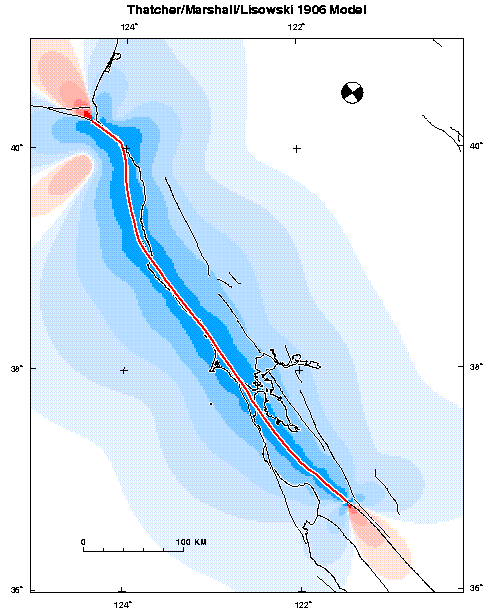The 1906 earthquake essentially turned off earthquakes of magnitude about 6 and larger for the next 73 years (with one exception in 1911). In the 70 years before, there had been at least 16 earthquakes of this magnitude, as shown below:

Earthquakes with magnitude about 6 and larger in the Bay Region since 1836.
The likely explanation for this period of seismic quiet is that slip on the 1906 fault plane redistributed stress on other San Francisco Bay area faults.
Because most major faults in the area are nearly parallel to the San Andreas fault, the change in stress tended to be in a sense to relax these faults. (If one of two side-by-side faults fails, the other will generally be relaxed; if the two faults are end-to-end, the second will become more stressed by the failure of the first.)

Stress changes after 1906 for faults parallel to the San Andreas. In blue regions, parallel faults are less stressed; in red regions, more stressed. Nearly all major faults were relaxed after 1906.
The important lesson here is that for most of this century, central California has been experiencing a seismically quiet period caused by stress relaxation after 1906. The region may slowly be recovering from this "stress shadow" to a more normal state of seismicity as the tectonic plates continue to move, and the stresses on the major faults recover to the values that they had in 1905.
 Jump to Navigation
Jump to Navigation